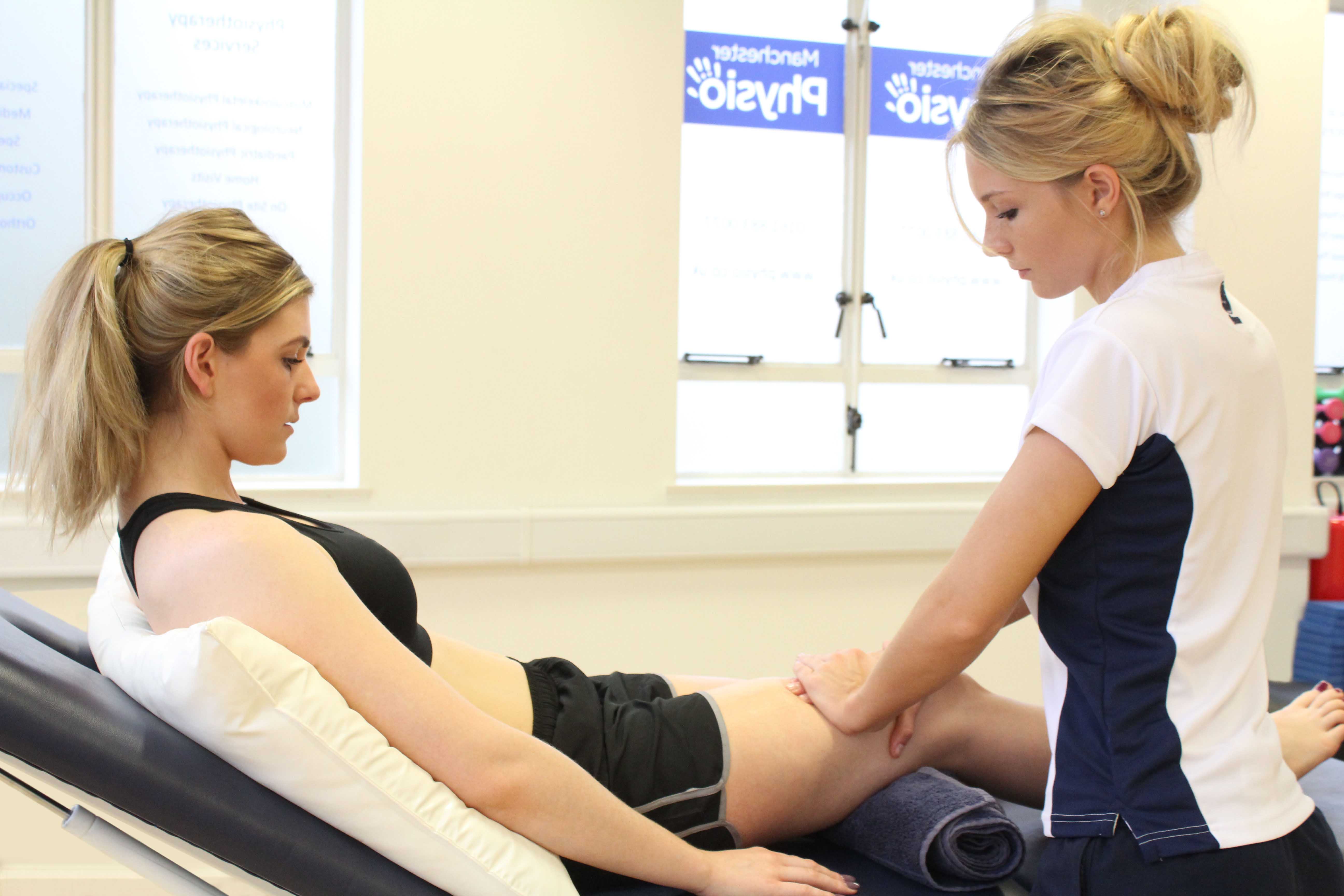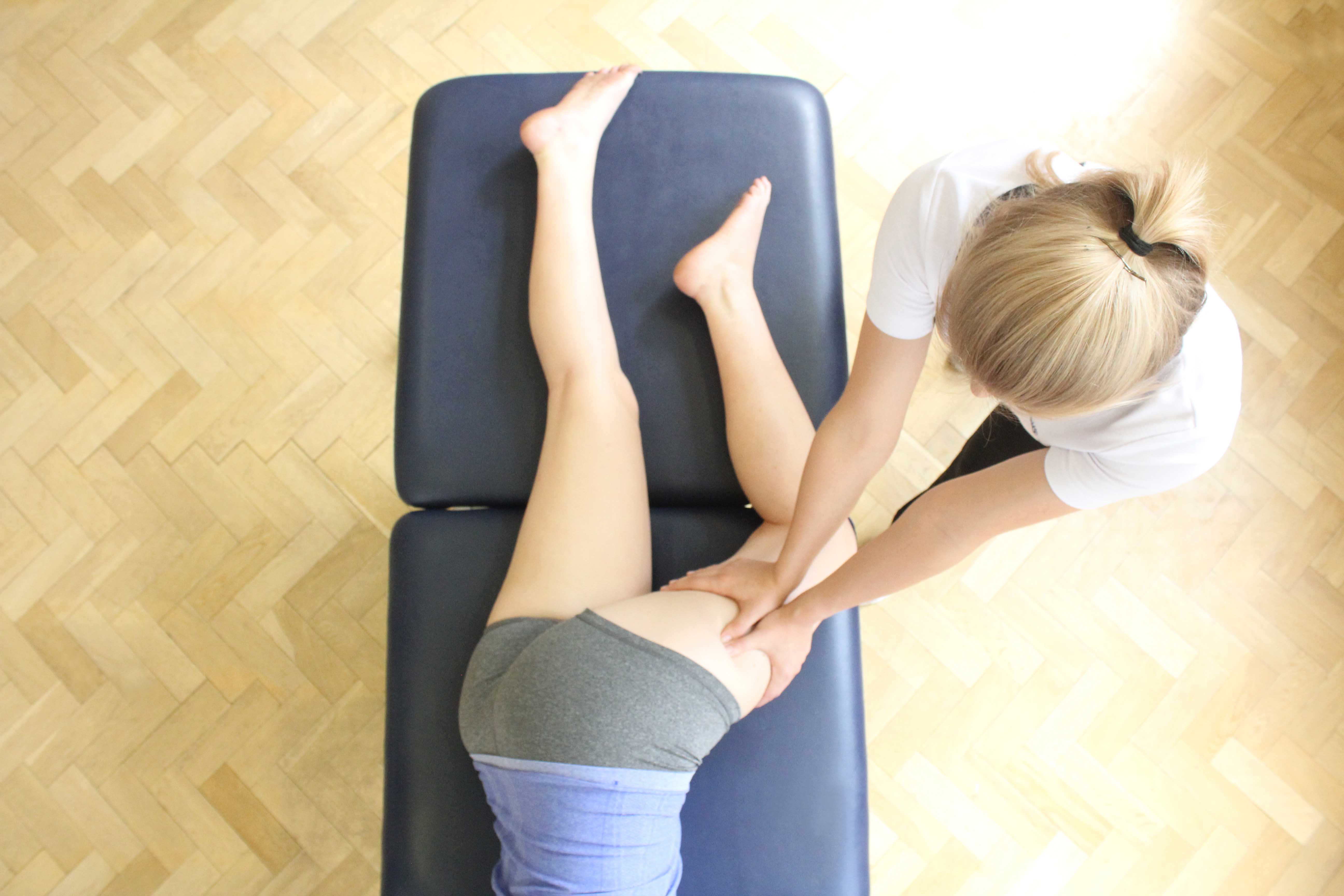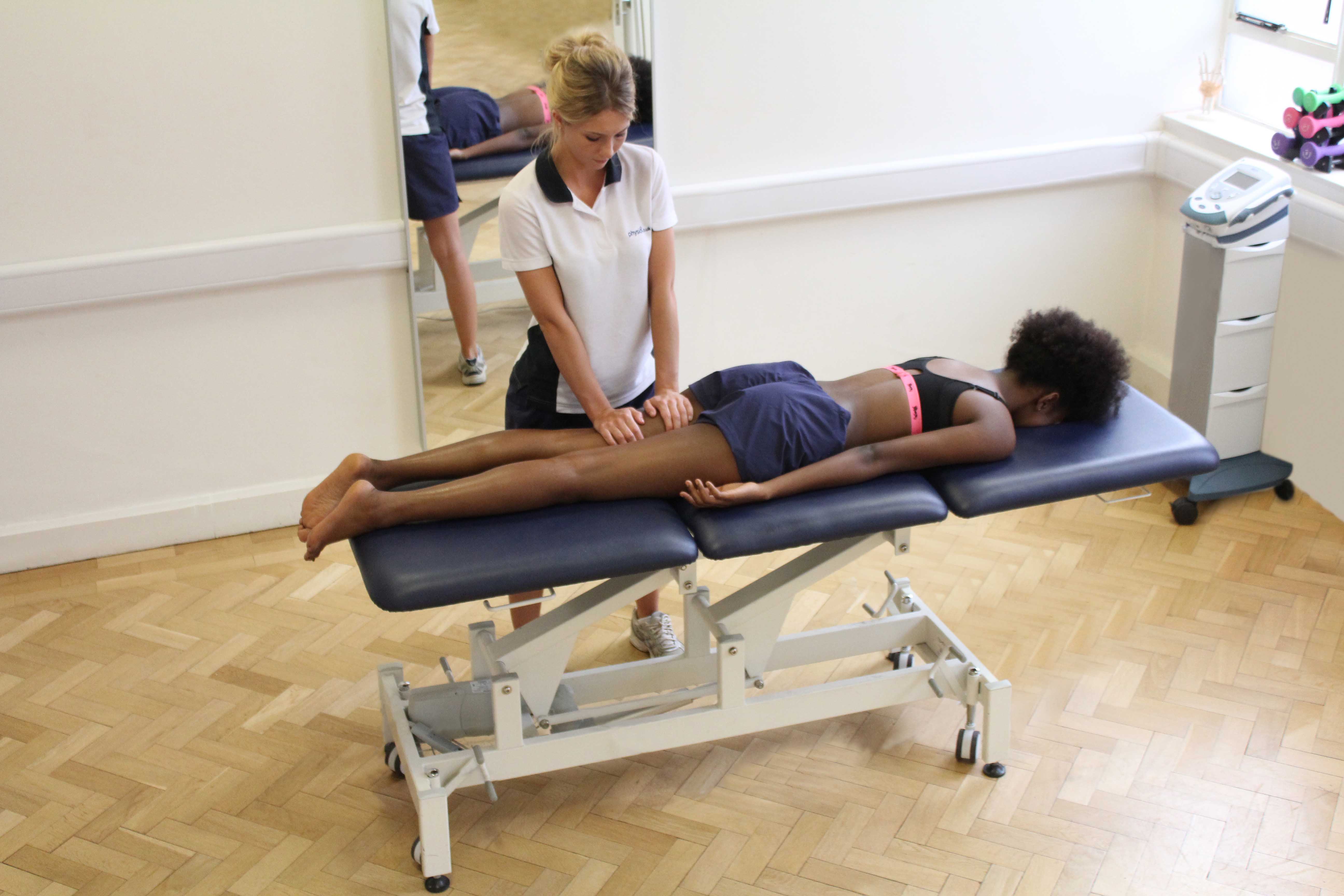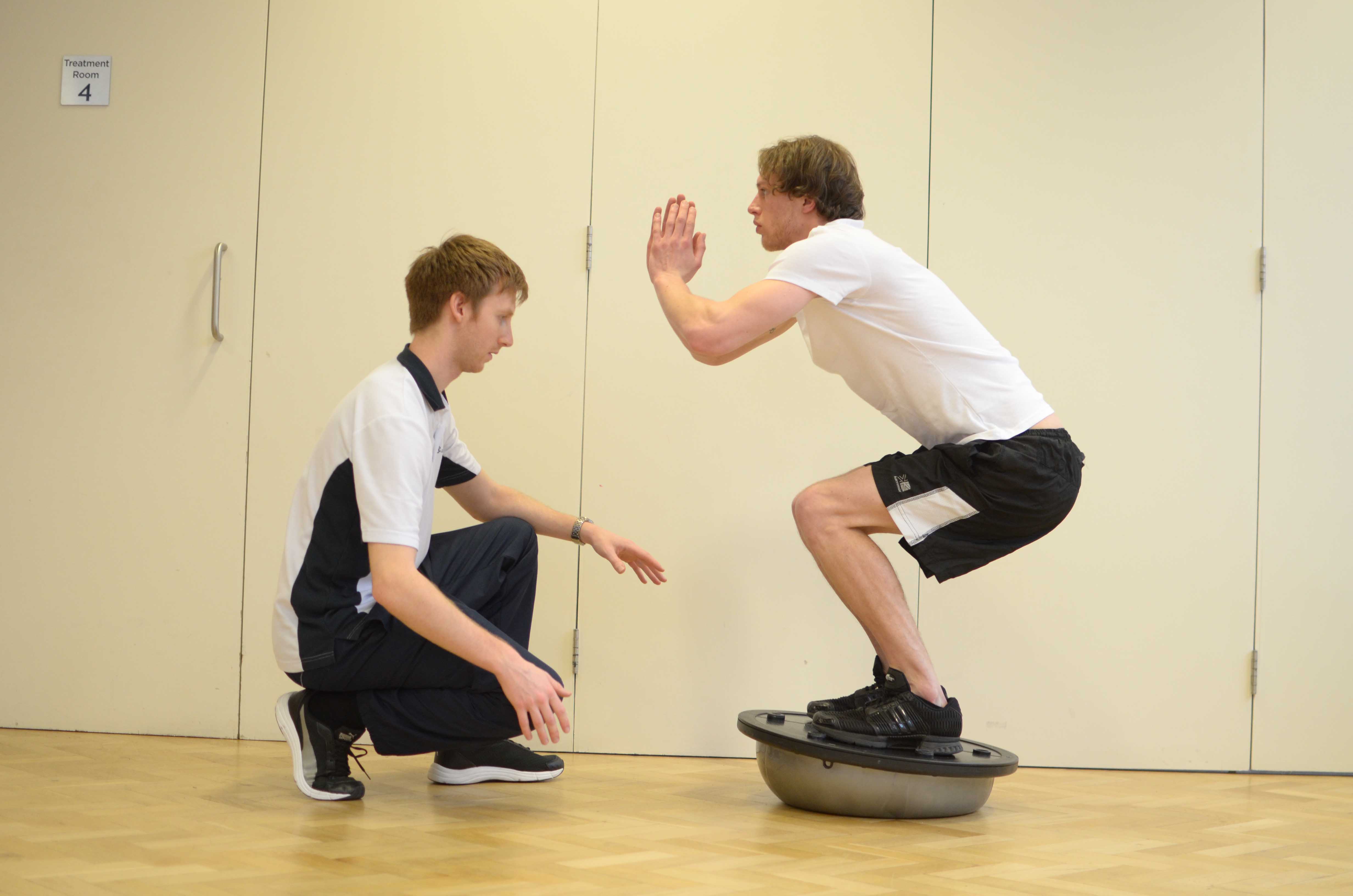What is a dead leg?
The quadriceps is a group of four muscles that make up the large muscle bulk on the front of the thigh. A dead leg (also known as quadriceps contusion, cork thigh, corky and quadriceps haemorrhage) is damage to and secondary bleeding within the quadriceps. Physiotherapy is a successful treatment for a dead leg.
 Above: Soft tissue massage of the quadricep muscles by a specialist MSK therapist
Above: Soft tissue massage of the quadricep muscles by a specialist MSK therapistHow does a dead leg happen?
A dead leg is caused by a direct blow to the thigh. This can occur by being struck by an object or by colliding with another person. The blow crushes the quadriceps muscle against the underlying bone. This damages the muscle fibres and blood vessels of the quadriceps, causing bleeding and swelling.
What are the symptoms of a dead leg?
Pain is felt at the point of impact. With minor dead legs you may be able to continue participating in sports. However, as the muscle cools down after activity the pain may gradually increase. This is because the bleeding and swelling continues after the activity. You may also experience a gradual tightening and stiffening of the quadriceps.
Other symptoms may include:
 Above: Trigger point massage of the iliotibial band by experienced MSK therapist
Above: Trigger point massage of the iliotibial band by experienced MSK therapistWhat should I do if I have a dead leg?
You can speed up your recovery and limit the amount of damage to muscle tissue by following a simple RICE regime in the first 24–48 hours. Swelling is necessary for your injury to heal; however, too much swelling can delay healing and cause further tissue damage. To control the amount of swelling, the RICE regime should be followed (Rest, Ice, Compression, Elevation). This regime reduces blood flow to the injured area and, therefore, can reduce the amount of swelling and tissue damage. Rest involves limiting the amount of weight you put through your leg. The use of crutches may be required if you are having difficulty walking.
Ice should be applied to the dead leg for 15–20 minutes every 1–2 hours. It should be applied using a bag of frozen peas or crushed ice wrapped in a damp cloth. Compression involves the application of an elastic bandage around the injury site. It should be firm but not tight. Elevation involves lying with your leg resting on a chair or pillows so that it is above the level of your heart. You should continue the RICE regime until you have been assessed by a physiotherapist. This should ideally be within the first 48 hours of the injury.
 Above: Compression massage applied to the hamstring muscles by experienced therapist
Above: Compression massage applied to the hamstring muscles by experienced therapistPhysiotherapy treatment for a dead leg.
Physiotherapy is important in the treatment of dead legs. Initially, your physiotherapist can determine the exact tissues damaged and the extent of the damage. Your physiotherapist will also be able to provide you with an indication of how long the injury is expected to take to heal. Initial treatment is aimed at reducing pain and swelling, and enhancing the healing of the injured structures. As you recover your physiotherapist can provide a strengthening and stretching programme to accelerate your return to sports participation.
Treatment can include:
 Above: Progressive quadricep strengthening exercises supervised by specialist MSK therapist
Above: Progressive quadricep strengthening exercises supervised by specialist MSK therapistWhat shouldn’t I do if I have a dead leg?
In the first 48 hours after a dead leg you should avoid activities that can increase blood flow to the quadriceps. An increase in blood flow can increase the amount of bleeding into the tissues and swelling. This in turn can cause increased pain and a prolonged recovery. These activities include, hot showers, quadriceps stretching, heat rubs, massage, consumption of alcohol and excessive activity.
Are there any long-term effects from a dead leg?
A condition called myositis ossificans can be caused if a dead leg is caused to re-bleed during recovery. This very serious condition can occur if someone returns to activity too soon, or through over-vigorous massage or stretching of the quadriceps muscle.
To arrange an assessment with a specialist physiotherapist call Physio.co.uk on 0330 088 7800 or book online.

 0330 088 7800
0330 088 7800

































